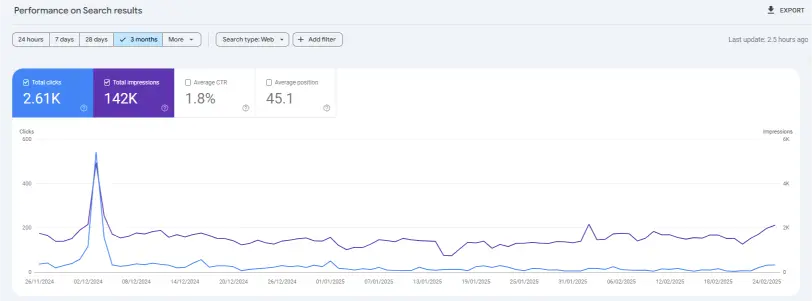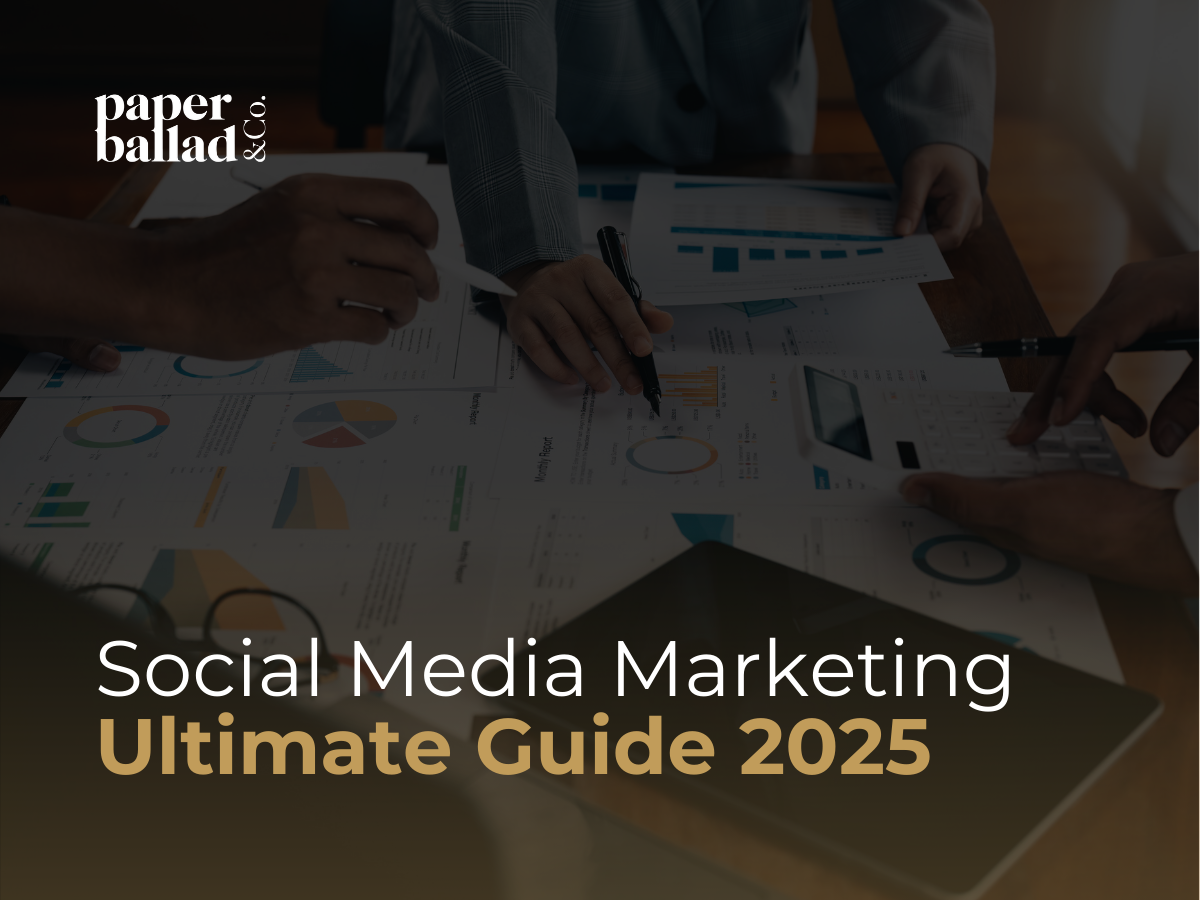In today’s digital age, social media marketing has become a cornerstone for businesses aiming to connect with their audience, enhance brand visibility, and drive sales. With billions of users across various platforms, social media offers unparalleled opportunities for businesses to engage with potential customers. This comprehensive guide delves into effective strategies, best practices, and emerging trends in social media marketing, equipping businesses with the knowledge to navigate this dynamic field successfully.
Table of Content
1. Introduction to Social Media Marketing
Social media is now essential for businesses looking to connect with their audience, boost brand visibility, and drive sales. With billions of users active daily, it offers unmatched opportunities to engage potential customers. This guide explores key strategies, best practices and trends to help businesses with social media marketing.
2. Benefits of Social Media Marketing

Source: DataReportal
Implementing a robust social media marketing strategy offers numerous advantages:
- Enhanced Brand Awareness: Regularly posting and engaging with users increases visibility and recognition. You can read our guide to brand awareness here!
- Improved Customer Engagement: Direct interactions foster trust and loyalty.
- Increased Website Traffic: Sharing content with links directs users to your site.
- Lead Generation: Features like shoppable posts and call-to-action buttons facilitate conversions.
- Cost-Effective Marketing: Many social media tools and analytics are free, offering affordable marketing solutions.
3. Understanding the Social Media Landscape

Social media is no longer just a tool for staying connected with friends and family; it has evolved into a powerful business tool for brand awareness, lead generation, and customer engagement. Each platform has its unique features, user demographics, and advertising capabilities. Understanding these differences helps you tailor your approach to maximise results.
3.1. Facebook
Facebook is still one of the most influential social media platforms. It has over 2.9 billion active users. It offers advanced targeting options, making it ideal for businesses looking to reach specific audiences. Its solid ad formats include carousel ads, video ads and lead generation forms. All of these help drive high engagement and conversions.
- User Base: Over 2.9 billion monthly active users across various age groups.
- Strengths: Versatile content formats, advanced advertising options and robust analytics.
3.2. Instagram
As a visually-driven platform with over 1.3 billion users, Instagram is perfect for brands focusing on aesthetics, lifestyle and storytelling. It thrives on high-quality images, short videos, and interactive features like Stories and Reels. Instagram’s advertising options allow businesses to integrate seamlessly into users’ feeds and explore tabs.
- User Base: Over 1 billion users, primarily aged 18-34.
- Strengths: Visual storytelling through photos, videos, Stories, and Reels.
3.3. LinkedIn
LinkedIn is the go-to choice for B2B marketing. It provides excellent targeting options based on job titles, industries, and company sizes. LinkedIn Ads are effective for lead generation, brand positioning, and professional networking.
- User Base: Approximately 774 million professionals.
- Strengths: B2B marketing, professional networking, and thought leadership.
3.4. TikTok
TikTok has revolutionised digital marketing with its short-form video content and viral trends. With over 1 billion users, it is an ideal platform for brands aiming to capture younger audiences through engaging and authentic content. Its advertising features include in-feed ads, branded hashtags, and TopView placements, making it a dynamic space for marketers.
- User Base: Over 1 billion users, predominantly Gen Z.
- Strengths: Short-form, creative video content with high engagement potential.
3.5. Xiaohongshu (or Little Red Book)
Xiaohongshu, or “Little Red Book,” is a Chinese social commerce platform that has a strong influence on purchasing decisions. It blends user-generated content with e-commerce, making it highly effective for brands targeting Chinese consumers. Businesses looking to enter the Chinese market can leverage its unique ad formats and influencer partnerships.
- User Base: Over 300 million users, mainly Chinese-speaking communities.
- Strengths: Combines social media and e-commerce, focusing on product reviews and lifestyle content.
4. Developing a Social Media Marketing Strategy
A well-defined strategy is essential for success.
4.1. Setting Clear Objectives
Define specific, measurable, achievable, relevant, and time-bound (SMART) goals, such as increasing brand awareness, driving website traffic, or generating leads.
4.2. Identifying Target Audience
Understand your audience’s demographics, interests, and online behaviours. Utilise analytics tools and market research to create detailed buyer personas, ensuring your content resonates with the intended audience.
4.3. Choosing the Right Platforms
Select platforms that align with your target audience and business objectives. For instance, Instagram and TikTok are ideal for reaching younger demographics. On the other hand. LinkedIn is more suited for B2B engagements.
4.4. Crafting a Social Media Marketing Content Plan
Develop a content calendar outlining the types of content to be posted. You can also establish the themes and posting frequency here. This ensures consistency and aligns with marketing campaigns.
5. Creating Engaging Content
Content is the foundation of social media marketing. It shapes brand identity, engages audiences and drives conversions. A strong content strategy balances creativity with data so that posts are relevant and optimised for each platform. Consistency and variety — whether through visuals, videos or user-generated content — are key to maintaining audience interest.
5.1. Visual Content
High-quality images and videos capture attention and drive engagement. Use tools like Canva or Adobe Spark to create visually appealing content.
5.2. Storytelling

Share stories that resonate with your audience. Highlight customer experiences, behind-the-scenes moments, or brand milestones.
5.3. User-Generated Content (UGC)
Encourage customers to share their experiences with your products or services. UGC builds trust and provides authentic content.
5.4. Live Streams
Live videos foster real-time engagement and authenticity. Use them for product launches, Q&A sessions, or behind-the-scenes tours.
6. Best Practices for Social Media Marketing
Implementing best practices to enhance your practice.
6.1. Consistency is Key

META Business Suite ‘content planner’ view
Maintain a regular posting schedule to keep your audience engaged and informed. Consistency helps in building brand recognition and trust.
6.2. Leverage Analytics Tools

Google Search Console ‘Performance’ page view
Utilise platform-specific analytics and third-party tools to track performance. These insights can guide content creation and strategy adjustments.
6.3. Stay Updated with Trends
Social media trends evolve rapidly and staying relevant is key. Stay updated about the latest features, user behaviours and platform updates.
6.4. Humanise Your Brand
View this post on InstagramA post shared by UX Strategy & Content Marketing Agency – Paperballad&Co. (@paperballad)
Showcase the human side of your business by sharing BTS content and employee stories. Customer testimonials will do wonders as well!
6.5 Understand Your Users & Leverage Data
Understanding user behaviour is key to crafting an effective social media strategy. This includes analysing user interactions, preferences and engagement behaviour to improve performance.
Paperballad uses UX research and data to find what works best for each audience. This ensures that marketing efforts are creative but also backed by behavioural data. Using analytics tools, A/B testing and user feedback helps brands improve messaging and maximise engagement.
.
7. Measuring Success and Analytics
Tracking performance metrics is crucial for optimising strategies. Key performance indicators (KPIs) include:
- Engagement Rate: Measures likes, comments, shares, and overall interactions.
- Reach and Impressions: Tracks how many people see your content.
- Conversion Rate: Assesses the percentage of users taking desired actions.
- Click-Through Rate (CTR): Determines the effectiveness of call-to-action links.
8. Paid Social Media Advertising
Paid advertising boosts visibility and target reach. Effective options include:
- Facebook and Instagram Ads: Offer detailed targeting options.
- LinkedIn Ads: Ideal for B2B campaigns.
- TikTok and Snapchat Ads: Great for engaging younger audiences.
9. Emerging Trends in Social Media Marketing
Staying ahead of trends ensures competitiveness. Social media is an ever-evolving landscape, with new technologies and user behaviours shaping the way brands engage with their audience. Here are some key emerging trends that are redefining social media marketing:
9.1. AI-Powered Marketing
Artificial intelligence is revolutionising social media marketing by enhancing personalisation, automation, and content recommendations. AI-driven tools analyse vast amounts of user data to predict preferences, optimise ad placements, and generate highly targeted content.
For example, platforms like Meta and TikTok use AI to tailor content recommendations, keeping users engaged for longer. Chatbots powered by AI, such as those found on Facebook Messenger and WhatsApp, provide instant customer support and streamline interactions. Marketers can also leverage AI-driven tools like Jasper and ChatGPT to generate captions, blog content, and even ad creatives.
9.2. Social Commerce
Social commerce is reshaping the online shopping experience by allowing users to make purchases directly within social media apps. Platforms such as TikTok, and Xiaohongshu integrate e-commerce features, creating seamless shopping experiences.
TikTok Shop is leading this revolution by enabling brands and influencers to embed product links in videos and live streams, making it easier for users to purchase items instantly. The platform’s algorithm-driven discovery and interactive shopping experience encourage impulse purchases, especially when combined with influencer marketing and real-time engagement.
In China, Xiaohongshu (Little Red Book) is setting the standard with its social commerce model, where users engage with product reviews, influencer recommendations, and direct purchasing options.
Additionally, Facebook Marketplace enable users to browse and buy products without leaving the app. However, it’s nowhere near as dynamic or interactive as the previous examples. Continuing on the META side of things, Instagram ‘Shops’ is shaping up to be a promising competitor to TikTok Shop although it’s unavailable in Malaysia at the time of writing.
For brands, social commerce eliminates friction in the buyer journey and increases conversion rates by leveraging the power of social proof and influencer marketing.
9.3. Ephemeral Content
Ephemeral content—temporary, short-lived content that disappears after a set period—has become a powerful tool for increasing engagement and urgency. Instagram Stories, Snapchat Snaps, and Facebook Stories create a sense of FOMO (fear of missing out), encouraging users to interact quickly before the content disappears.
Brands leverage ephemeral content for time-sensitive promotions, behind-the-scenes glimpses, interactive polls, and real-time updates. TikTok has also embraced ephemeral engagement with live streaming, where brands and influencers can connect with audiences in an unfiltered and authentic way.
The success of ephemeral content lies in its ability to foster real-time engagement and create a sense of exclusivity that keeps users coming back for more.
9.4. Short-Form Video Dominance
Short-form video remains the most engaging content format across social media platforms. TikTok, Instagram Reels, and YouTube Shorts have reshaped how brands deliver messages—quick, dynamic, and visually captivating.
Brands are investing more in bite-sized storytelling, user-generated content, and viral challenges to capture audience attention within seconds. The key to success in short-form video marketing lies in authenticity, creativity, and the ability to hook viewers immediately.
9.5. Ethical & Transparent Marketing
Consumers are becoming more conscious of ethical considerations, and brands that prioritise transparency and social responsibility gain stronger loyalty. Ethical marketing includes sustainability efforts, diversity and inclusion messaging, and honest advertising practices.
Brands that openly address social issues and show genuine commitment to ethical practices tend to build stronger relationships with their audience. Companies like Patagonia and Ben & Jerry’s have successfully positioned themselves as purpose-driven brands by advocating for environmental and social causes.
9.6. The Evolution of Influencer Marketing
Influencer marketing is shifting from mega-celebrities to micro- and nano-influencers, who tend to have smaller but highly engaged audiences. Brands are now collaborating with influencers who align with their values and can foster authentic connections with their followers.
Additionally, performance-based influencer marketing is on the rise, where brands measure success through engagement rates, conversions, and ROI rather than just follower counts. Emerging platforms like TikTok Creator Marketplace and Instagram’s Brand Collabs Manager make it easier for brands to find and partner with the right influencers.
10. Conclusion
Social media marketing is a dynamic and powerful tool for businesses to grow their presence, engage with audiences, and drive sales. By leveraging the right platforms, strategies, and trends, brands can maximise their impact in an ever-evolving digital landscape.
At Paperballad, we specialise in crafting compelling social media marketing strategies that drive engagement, boost brand awareness, and maximise conversions. Our team of experts helps brands stand out with data-backed insights, engaging content, and trend-driven strategies. Let us elevate your brand’s digital presence—get in touch with us today!
















Comments (2)
Pingback: Brand Awareness: 10 Essential Social Media Marketing Techniques
Pingback: The Ultimate Guide to Marketing Strategy in Malaysia
Comments are closed.